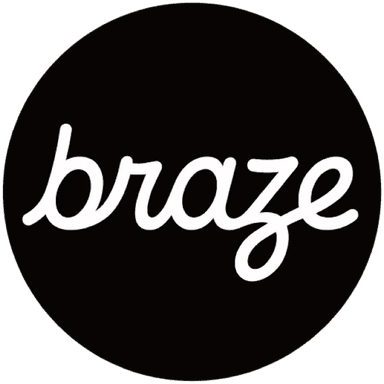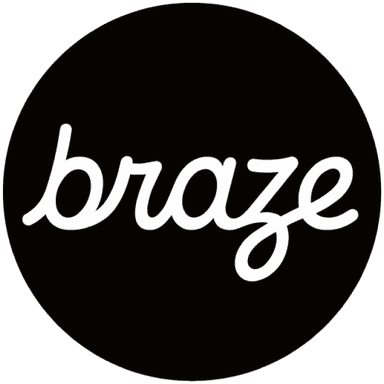Published on Invalid Date/Last edited on Invalid Date/10 min read


Marketing automation gives teams more reach, but without clear metrics, it’s hard to know what’s actually working. Key Performance Indicators (KPIs) turn activity into insight and help teams prioritize what drives results.
In this article, we’ll explore which KPIs matter most, how to track them effectively, and what it takes to turn performance data into meaningful results.
Contents
Marketing automation KPIs are the metrics used to measure the effectiveness of automated campaigns. From email sequences to multi-channel journeys, these performance indicators help teams understand how well their marketing automation is working, and where there’s room to improve.
Unlike vanity metrics that only track surface-level activity, the right KPIs connect campaign performance to business impact. They span engagement, conversions, retention, and revenue, helping you tie actions to outcomes and focus on what actually drives growth.
Without clear KPIs, it’s hard to know if your marketing automation is actually working. Tracking the right metrics brings structure and accountability to your strategy, helping teams pinpoint what’s driving results and what needs adjustment.
KPIs also play a key role in proving ROI. They help teams move past activity-based reporting and focus on the outcomes that matter—increased engagement, stronger conversions, and long-term customer value. For businesses operating across multiple channels or touchpoints, KPIs create a shared language for performance—so everyone stays aligned, from marketers to stakeholders.
A marketing automation audit helps you take stock of your current setup, fix what’s underperforming, and spot new opportunities to improve. It’s a chance to realign your strategy with your goals—before things slip off track.
Here’s a simple process to follow:
Start by getting clear on what you’re trying to achieve. Are you focused on lead generation, conversion, onboarding, retention? Your goals should shape what you audit and which KPIs matter most.
Take a step back and document active automations—welcome sequences, re-engagement flows, abandoned cart journeys, and more. Identify which stage of the funnel each one supports, and flag any overlaps or dead ends.
Look at how your audiences are defined. Are segments based on real-time behaviors and preferences, or outdated lists? Poor targeting often leads to low engagement and high unsubscribe rates.
Evaluate key metrics like open rate, click-through rate, time-to-conversion, and workflow completion. Spot trends, drop-off points, or high-performing content worth replicating.
Make sure you’re collecting the right data, integrating across systems, and surfacing insights you can act on. If reporting is slow, manual, or siloed, it's time for an upgrade.
Bring everything together and highlight what needs to be fixed, refined, or scaled. This might include updating content, tweaking triggers, tightening segmentation, or consolidating tools.
Regular audits help you stay proactive, so your automation doesn’t just run without purpose.
Once you have your audit done, it’s time to start tracking metrics. Success in marketing automation is all about outcomes. By tracking the right KPIs, you can understand how your automation is performing at every stage—from first interaction to long-term value.
To get a clear picture, group your KPIs into four categories:
These metrics help you gauge audience interest and message relevance.

Track how effectively your automations are nurturing leads and driving outcomes.

These KPIs help connect automation efforts to business value.
Zoom in on how your workflows are performing behind the scenes.
A mix of these metrics helps in measuring automation success as it tells you what’s working, what’s lagging, and where to fine-tune. For enterprise teams running multi-channel strategies, automation KPIs turn complexity into clarity.
Not every KPI will be meaningful to your strategy. The most valuable metrics are the ones that align with your goals, customer journey stages, and business model. Choosing the right KPIs starts with asking the right questions.
Are you trying to increase engagement? Drive more conversions? Boost retention? Your KPIs should reflect the outcome you’re aiming for—not just track activity for the sake of it.
Different stages of the journey require different indicators of success:

A B2B SaaS company might focus on SQLs and onboarding engagement, while a retail brand could prioritize cart recovery and average order value. The KPIs you track should match the way your business grows.
A single metric can fluctuate, but patterns over time tell the real story. Build a dashboard view that lets you track movement across KPIs, not just isolated numbers.
By narrowing your focus to KPIs that reflect your strategy and stage, you’ll avoid data overwhelm, and spend more time acting on insight instead of interpreting noise.
Once KPIs are in place, the next step is making them useful. That means tracking consistently and acting on what the numbers are telling you. These best practices in marketing automation help turn insight into action—so your automation strategy keeps evolving.
Every automation should have a defined purpose tied to a measurable outcome. Are you onboarding new users, recovering abandoned carts, or increasing product adoption? Set the goal first, then select the KPIs that reflect success.
Don’t wait until a quarterly report to spot issues. Use real-time dashboards to keep an eye on key metrics and respond quickly when something’s off—like a sudden spike in unsubscribes or drop-off mid-journey.
Use A/B testing to fine-tune subject lines, timing, content, and channel mix. Even small changes can lead to better performance when guided by data.
More workflows don’t always equal better results. Instead, prioritize journeys that deliver real value to your audience—and measure success by outcomes, not activity.
KPIs become more powerful when they’re visible. Share insights with product, sales, or customer success to uncover cross-functional opportunities and align on impact.
Marketing automation is never truly “set and forget.” The most effective strategies are the ones that stay agile, adapt to feedback, and use KPIs to guide smarter decisions over time.
Tracking KPIs gives you the insights—but what really matters is what you do with that data. Here's where the right platform becomes your secret weapon.
You'll want a solution that delivers:
Days-old data is dead data. Your customers are moving fast, and so should your insights. Look for real-time metrics that span every touchpoint of your customer journey, so you can catch opportunities, fix what's broken, and test new ideas the moment they matter.
Your marketers shouldn't be waiting around for analysts to decode their own campaigns. Choose a platform with intuitive reporting that puts the power back in their hands—custom dashboards, campaign comparisons, and filtering by audience, channel, or conversion event, without needing to write code.
You need to see the whole story—how users flow through your workflows, where they're dropping off, which paths actually convert, and what keeps them coming back for more.
It all comes together when your data, channels, and segmentation work as one cohesive system. That's what transforms scattered touchpoints into meaningful personalization and measurable outcomes across the entire customer lifecycle.
The right platform helps teams move from passive reporting to active decision-making, spotting opportunities faster and improving outcomes in real time.
The most effective automation strategies are built on clarity—and KPIs provide it. They help teams understand how their efforts are performing, where to optimize, and how to connect day-to-day activity to long-term business outcomes.
By selecting the right metrics, tracking them in real time, and using them to guide decisions, brands can build stronger, more responsive campaigns. KPIs become a practical tool to help you pinpoint gaps, prioritize improvements, and keep campaigns focused on what actually works.
KPIs in marketing automation are the metrics used to evaluate how well your automated campaigns are performing. They help track engagement, conversions, and business impact.
Success in marketing automation comes down to metrics that reflect engagement, lead movement, and value: open rate, CTR, MQL-to-SQL progression, time-to-conversion, CLV, and overall campaign ROI.
Conduct a marketing automation audit by reviewing goals, mapping workflows, evaluating segmentation, analyzing performance data and drop-off points, and assessing reporting tools to uncover gaps and improvement areas.
Engagement KPIs include open rate, click-through rate, unsubscribe rate, and bounce rate—each offering insight into how well your messages resonate and reach your intended audience.
Align KPIs with funnel stages and objectives—use open rate and site visits for awareness, MQLs and conversion rates for nurturing, and CAC, CLV, repeat purchase rates, and churn for bottom-of-funnel and retention goals.
Sign up for regular updates from Braze.





